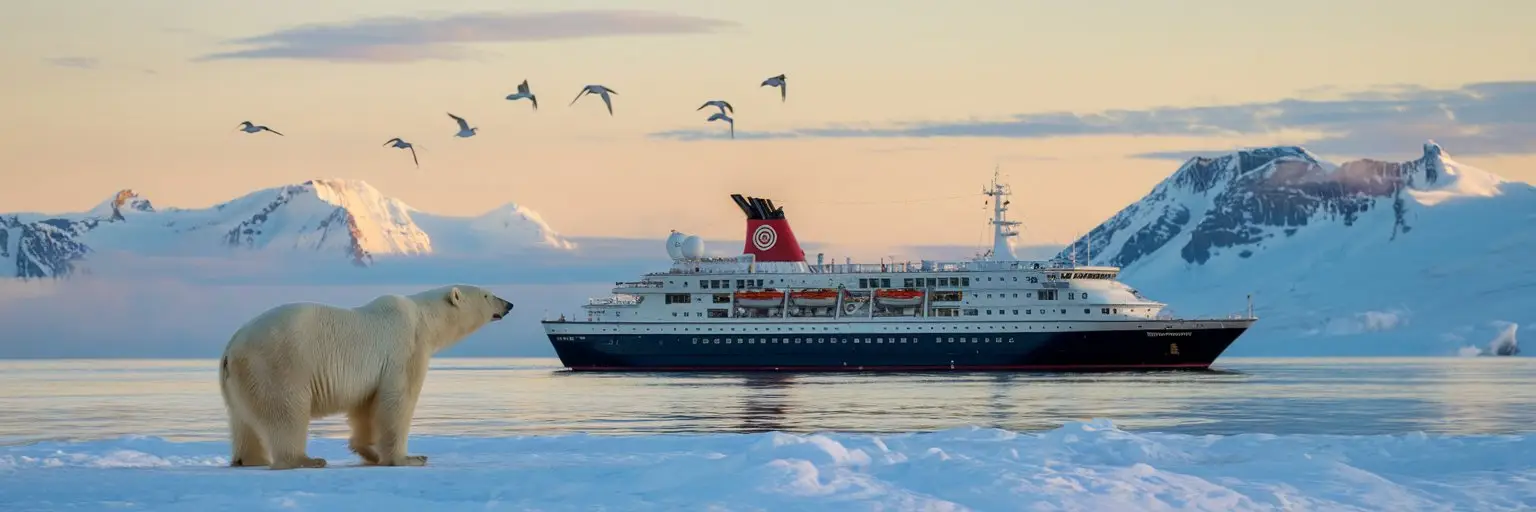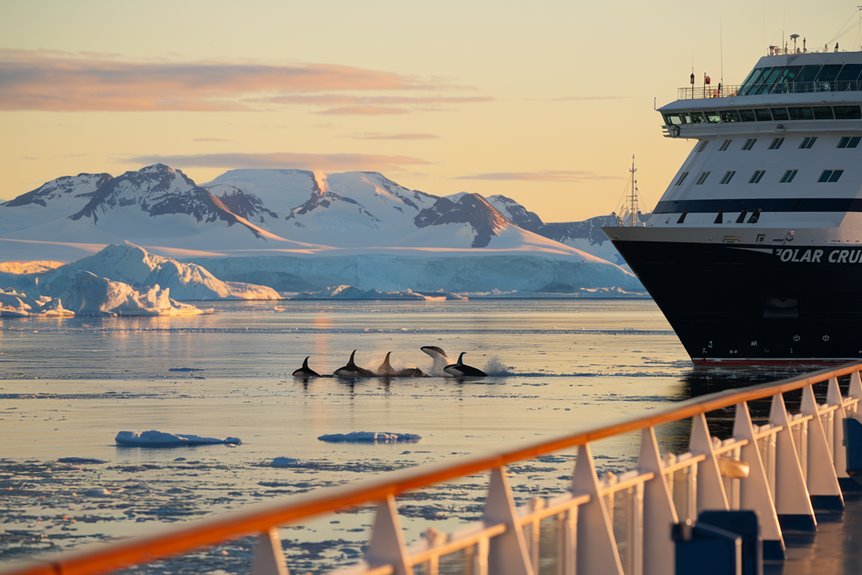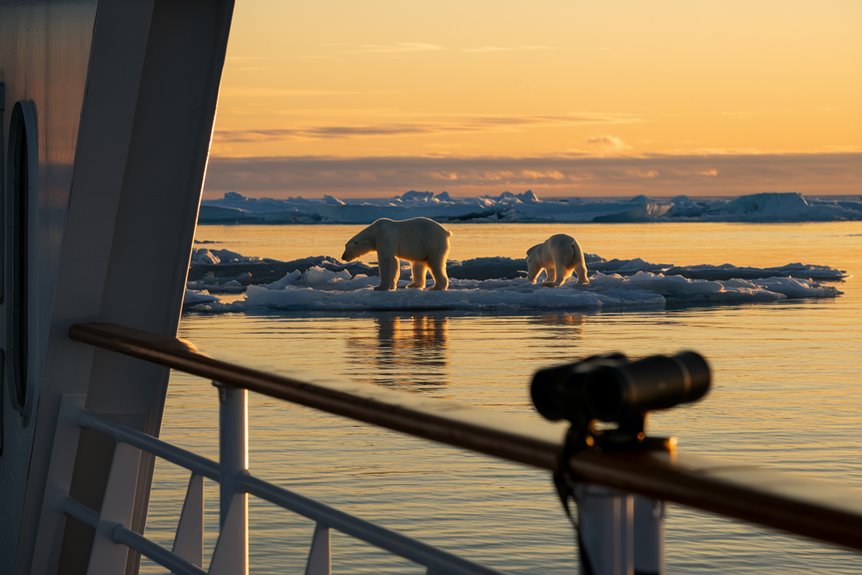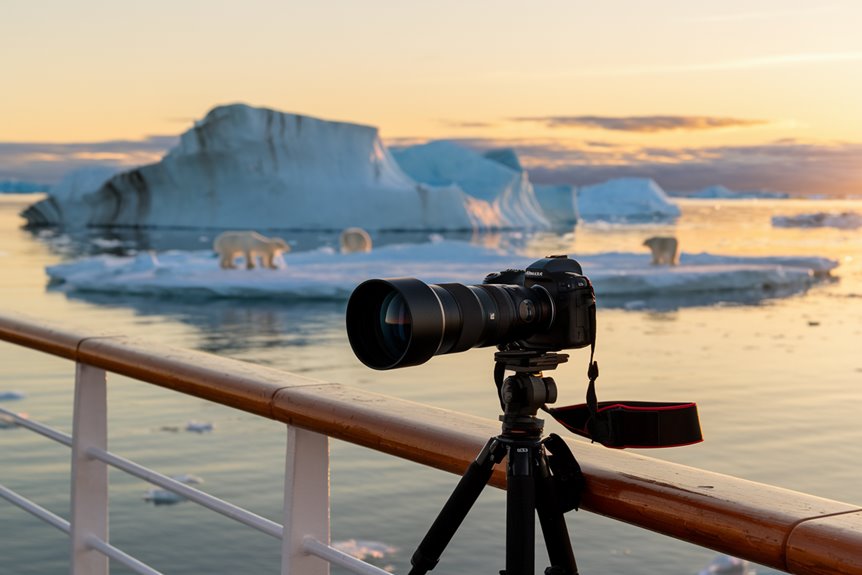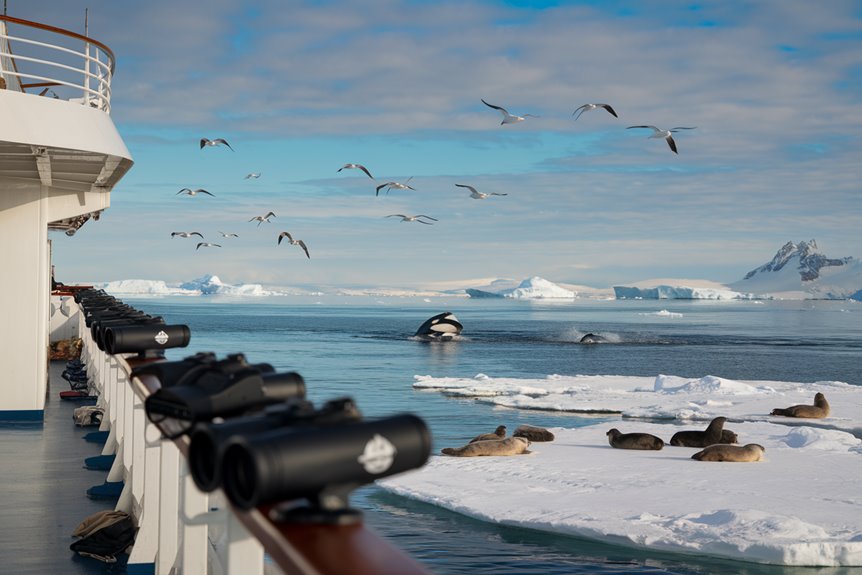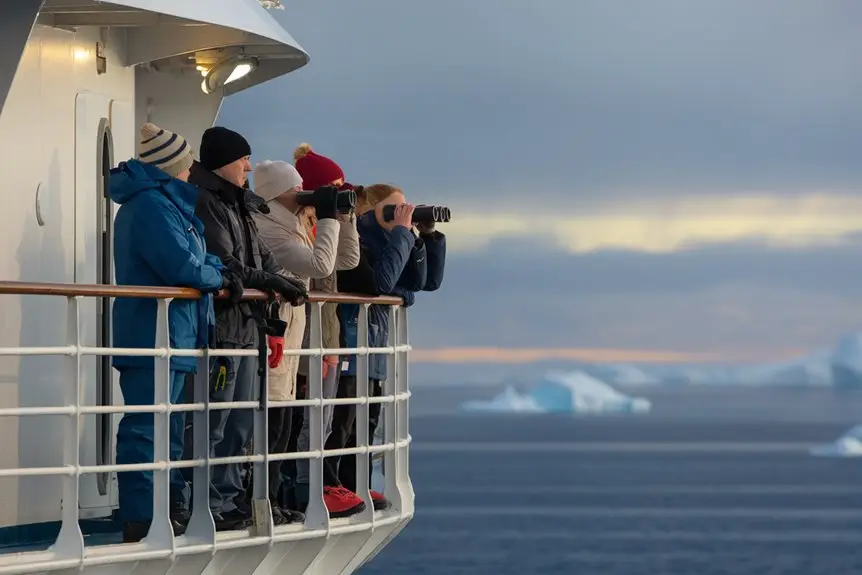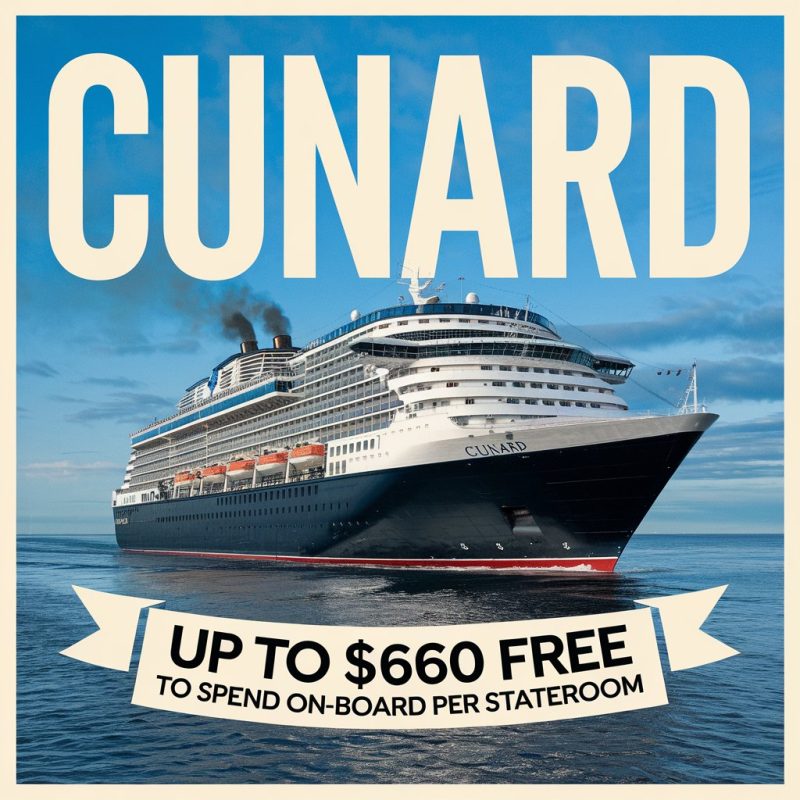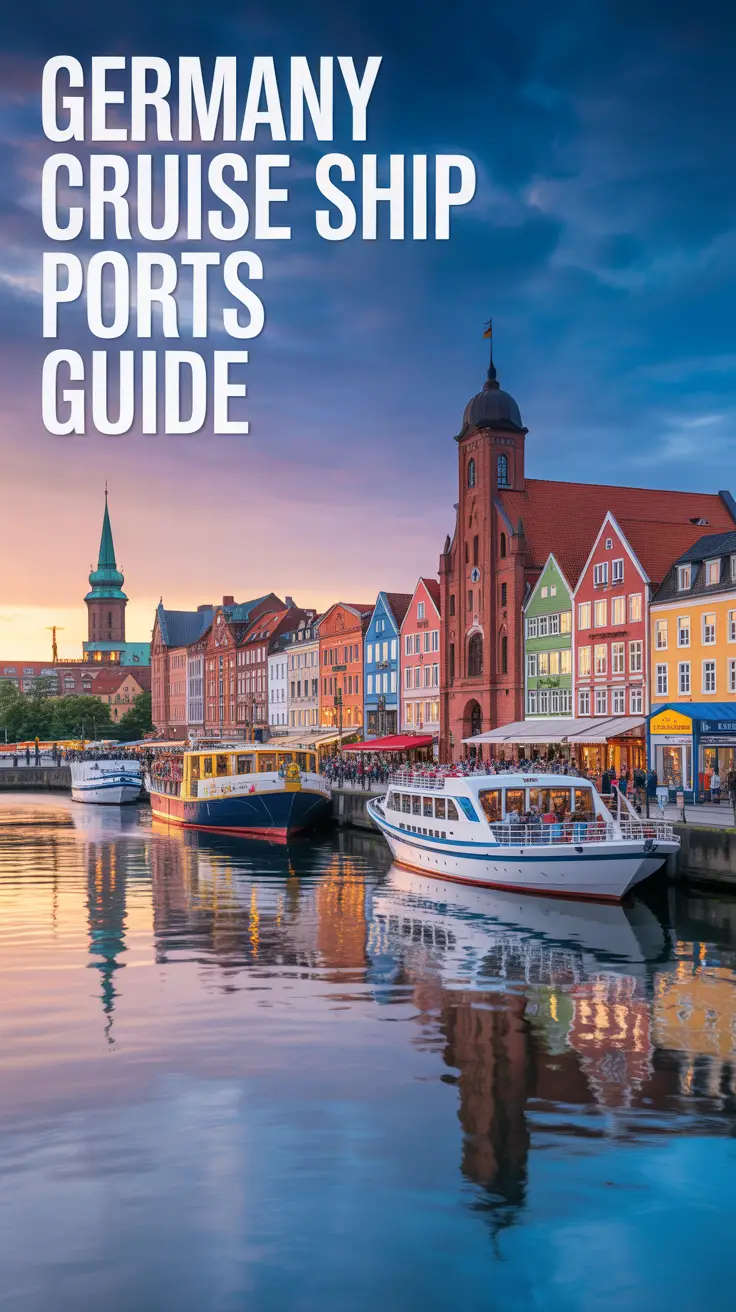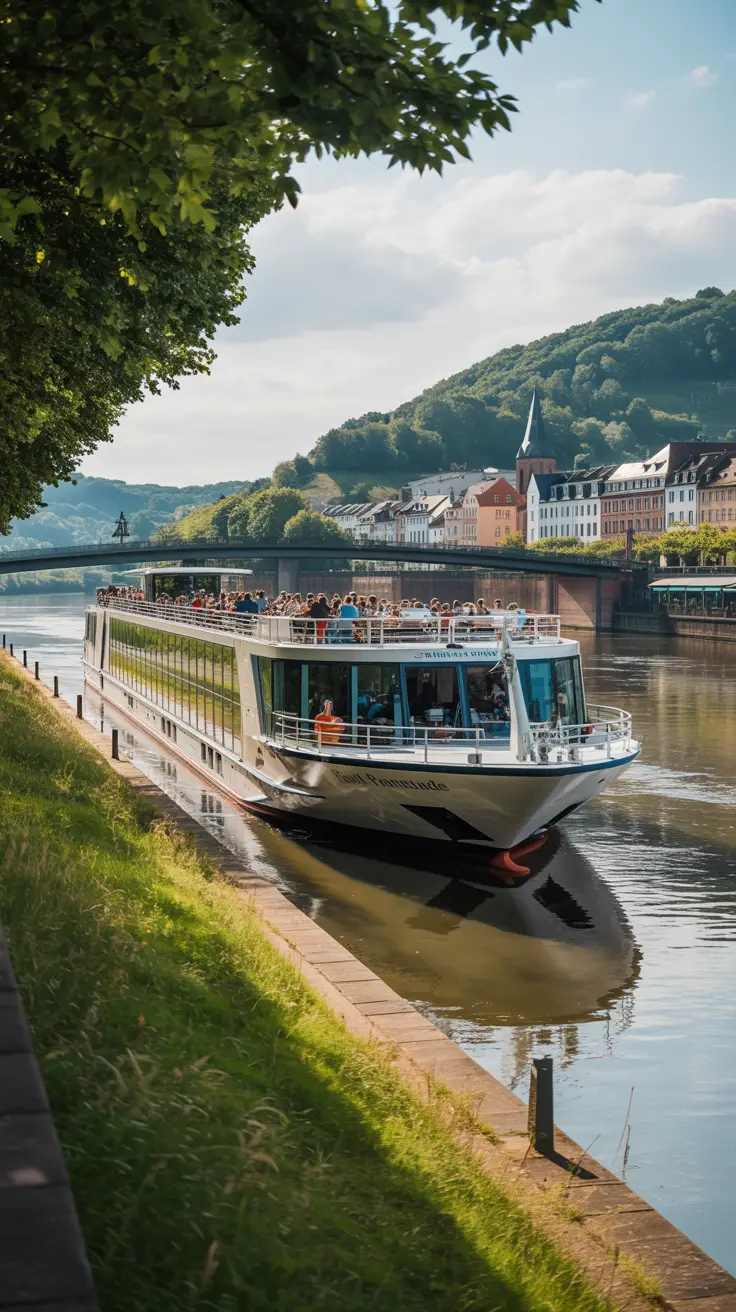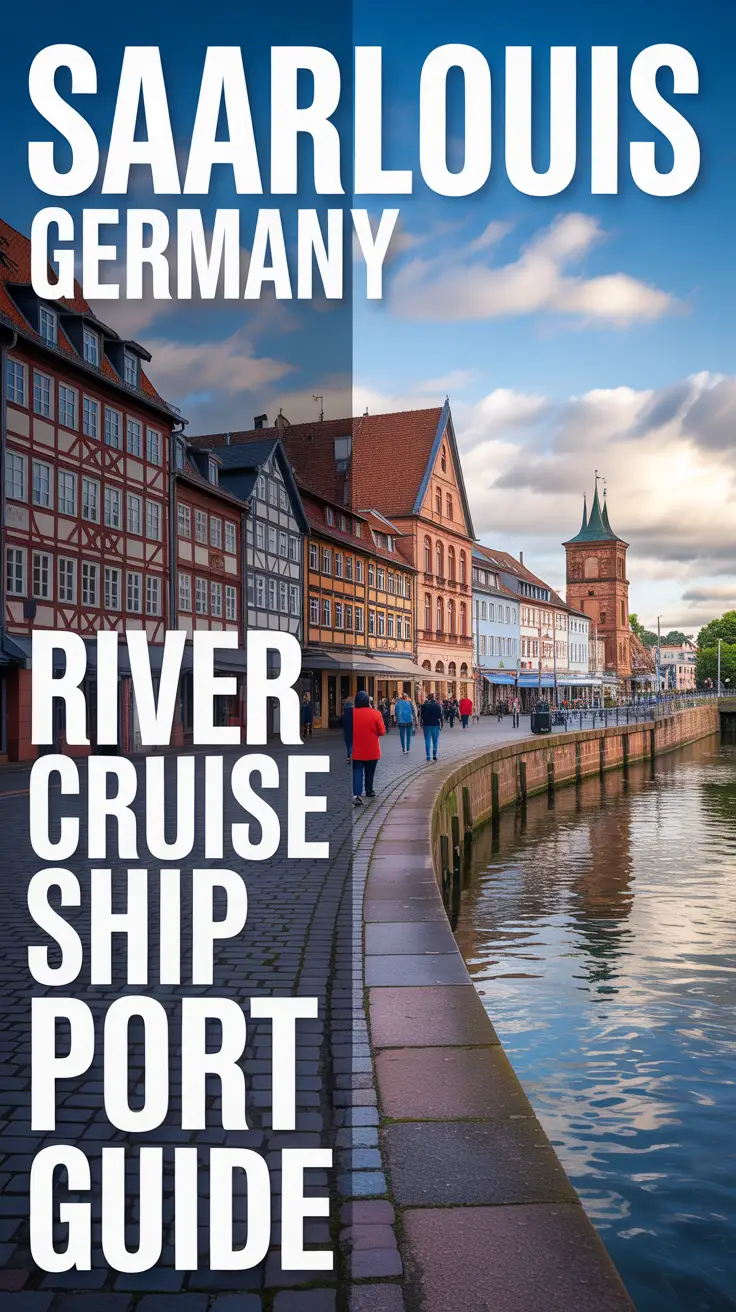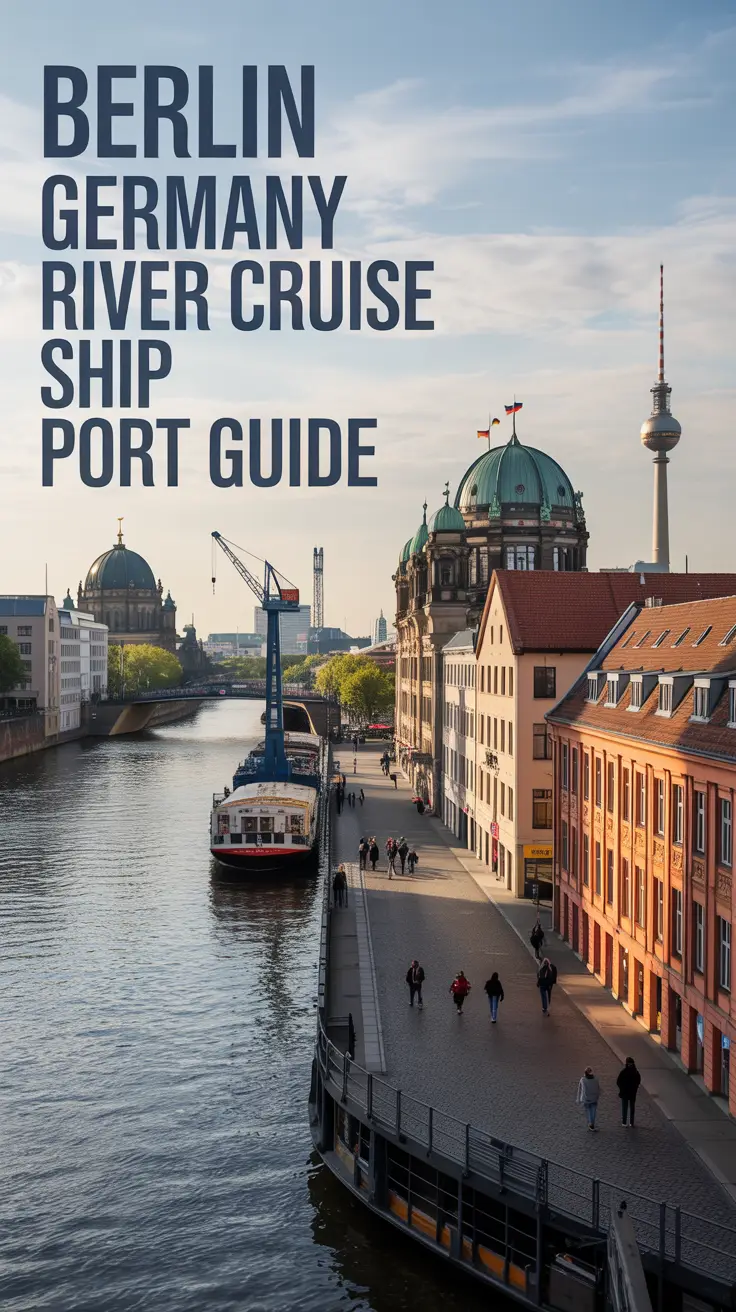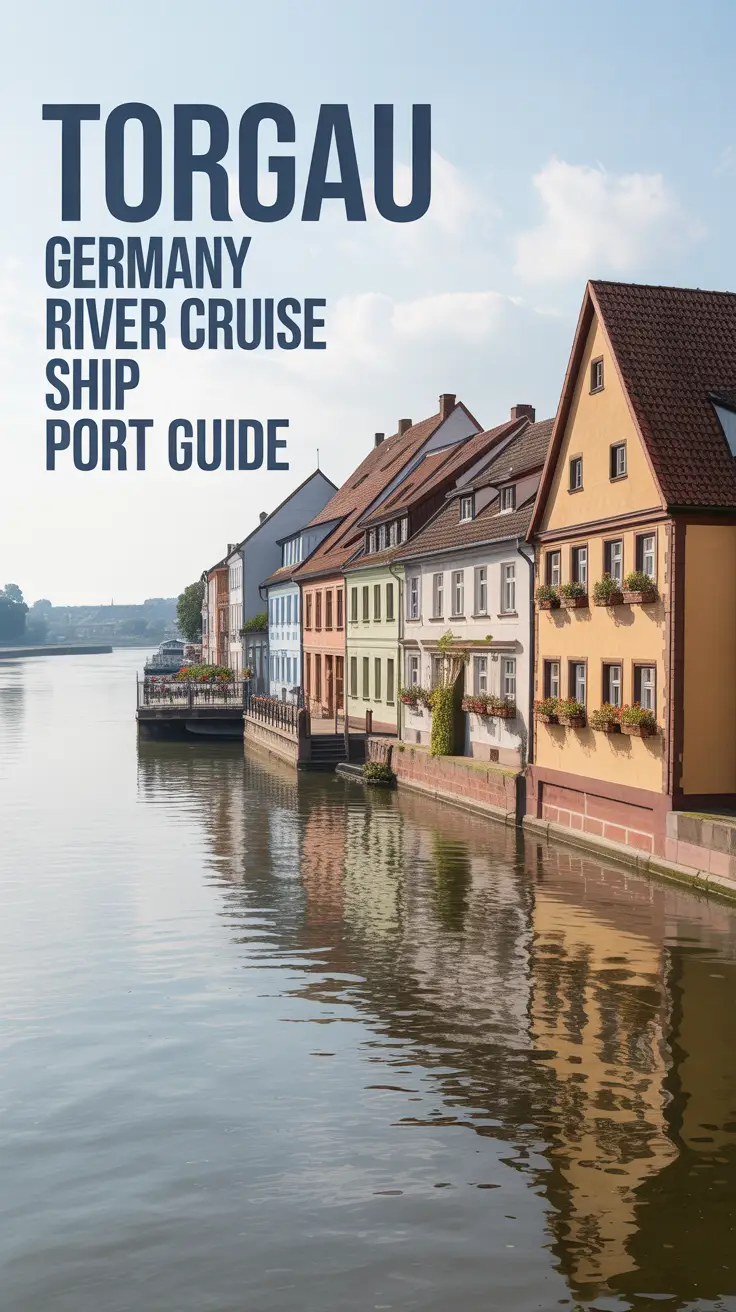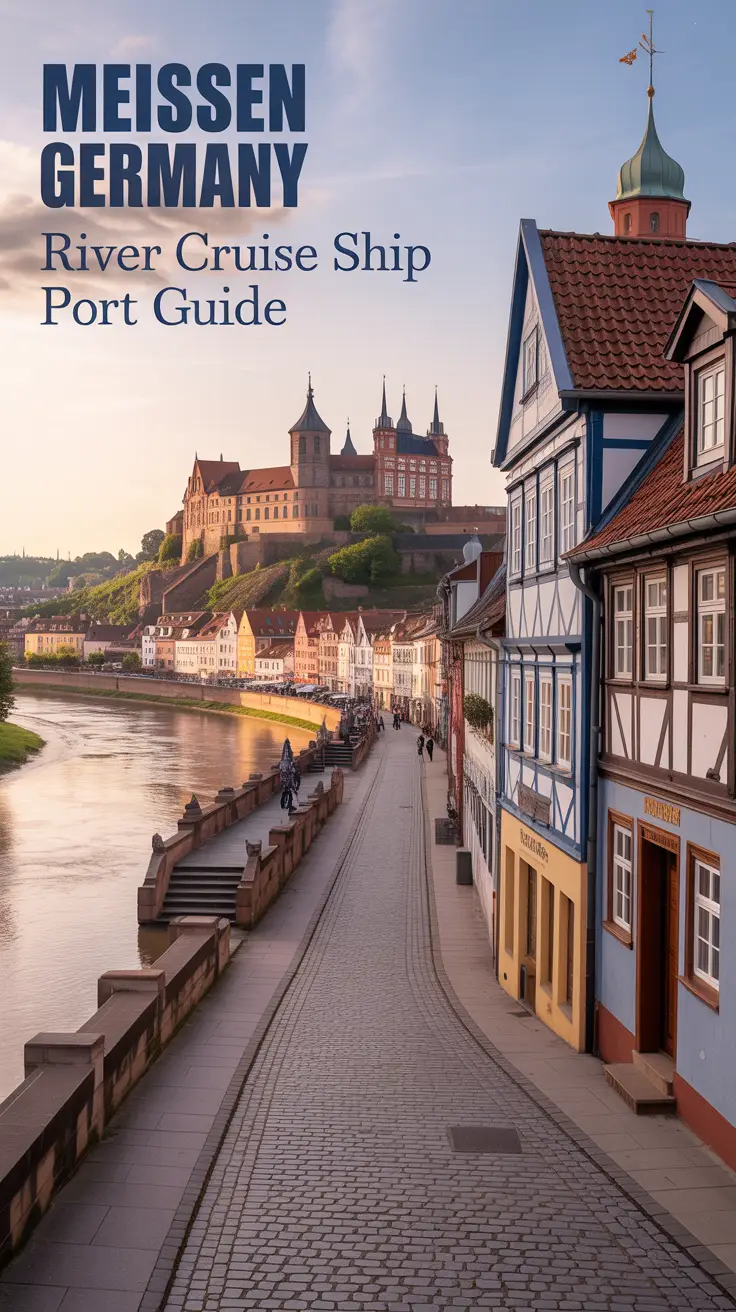Get the best views of polar wildlife from your cruise ship’s top decks, especially from observation areas facing the wind. You’ll find early mornings offer prime viewing times, particularly during summer’s extended daylight hours. Take your binoculars and camera with a zoom lens – you’ll need them to spot wildlife at a distance. Make sure you mount your camera on a tripod for steady shots.
For other Wildlife Spotting in Polar Regions check out our Wildlife Spotting in Polar Regions Guide page.
You must keep a safe distance from seals, walruses and polar bears. Listen to your guide’s safety instructions carefully. These creatures follow regular patterns that you can learn to predict, making wildlife spotting more successful.
Quick tips:
- Choose windward viewing spots
- Head out early in the morning
- Bring proper viewing equipment
- Stay at safe distances
- Watch for repeated behaviour patterns
🐧 Polar Cruise Enquiry 🐻❄️
Our team of polar travel specialists have personally explored both the Arctic and Antarctic regions – from tracking polar bears in Svalbard to kayaking with penguins off the Antarctic Peninsula. Let us find the right polar expedition cruise for you.
Key Takeaways
- You’ll get the best wildlife views from the upper decks, where nothing blocks your sight of the polar landscapes.
- Watch the ship’s windward side to see seabirds gliding on the air currents close to your vessel.
- You should head out early in the morning for the best sightings, especially in summer when you have daylight around the clock.
- When the weather turns rough, you can retreat to the observation lounges, where you’ll stay warm while watching wildlife through large windows.
- Keep your binoculars handy to spot animals before they’re close enough to photograph – this works particularly well when you’re looking for polar bears along the ice edges.
Best Deck Vantage Points
Higher decks on polar cruise ships give you the best views for spotting wildlife. You’ll see more of the surrounding waters and ice from these elevated positions, making it easier to track polar bears and other animals.
Choose the windward side of the deck to watch seabirds gliding on air currents. Your binoculars will help you spot wildlife from these higher vantage points.
The ship’s observation lounges offer you comfortable viewing spaces with large windows, keeping you warm and dry while you watch. The bow’s ‘Swan’s nest’ gives you a unique forward-facing view.
You’ll find the open deck spaces perfect for scanning the horizon and spotting wildlife. These areas give you clear, unobstructed views in all directions.
Prime Wildlife Viewing Hours
Best Times for Arctic and Antarctic Wildlife Viewing
You can spot different wildlife throughout the year in polar regions. The viewing times depend on seasonal patterns and animal behaviour.
Arctic Viewing Periods:
- Early morning in June: Watch polar bears hunt on ice floes
- Summer nights: Use midnight sun for round-the-clock wildlife spotting
- Autumn: See caribou and muskoxen during migration season
Antarctic Viewing Periods:
- November to January: Observe penguins in their colonies
- December to February: Take advantage of 20-hour daylight periods
- February to March: Watch humpback and minke whales feed on krill
- Early summer: Spot penguin chicks, seals and seabirds together
The Arctic’s midnight sun lets you watch wildlife at any hour during summer months.
Antarctica’s extended daylight from December to February gives you plenty of time to spot different species.
You’ll get the best variety of wildlife by matching your visit to these peak viewing seasons.
Essential Wildlife Photography Equipment
Your essential wildlife photography gear starts with a reliable camera. Choose a weather-sealed model with quick autofocus, such as the Nikon D850 or Sony A1. These cameras handle harsh conditions well and deliver sharp images.
You need a telephoto lens between 400-600mm to capture wildlife from a distance. This range lets you photograph animals without disturbing them.
Mount your camera on a sturdy tripod with a gimbal head to keep your shots steady and reduce arm strain. Consider adding a teleconverter to extend your lens reach. Remember, this will reduce your available light.
Keep your gear safe with:
- Rain covers for wet conditions
- A weather-resistant camera bag
- Protective lens filters
- Binoculars for spotting wildlife
Pack your equipment in a spacious, padded bag that protects against bumps and weather. Your binoculars help you spot subjects before they’re in camera range, giving you time to prepare your shot.
See what’s on offer from the Under-Ice Wildlife on Polar Cruises for a different Wildlife Spotting in Polar Regions.
Animal Behavior Watching Tips
Polar Wildlife Viewing Tips
You’ll spot animals more easily when you know their habits. Polar bears hunt seals near ice edges throughout the day.
Walruses gather in large groups on rocks and ice floes, making them highly visible from your ship.
Seals often approach Zodiac boats with curiosity and rest on ice chunks nearby.
Arctic foxes become active during summer breeding season.
Seabirds like puffins and guillemots nest on coastal cliffs in large colonies.
Stand on the deck’s windward side to photograph seabirds more effectively.
Keep at least 30 metres away from polar bears to protect their natural behaviour.
Key times to watch:
- Dawn and dusk for polar bear hunting
- Midday for walrus gatherings
- Summer months for Arctic fox activity
- Breeding season for seabird colonies
Stay alert, keep your camera ready, and move quietly to enhance your wildlife viewing experience.
Safety During Wildlife Encounters
Keep Safe Around Arctic Wildlife
Polar bears require extra caution during your Arctic adventures. Keep these distances:
- 200 metres when on your cruise ship
- 30 metres in small boats
- Never approach swimming bears
Your shore excursions will have safety measures:
- Expert guides will accompany you
- Guides carry firearms and deterrents
- You’ll follow strict safety protocols
If you meet a polar bear:
- Stay calm
- Make yourself look big
- Back away slowly
- Keep your bear spray ready
- Never run
Your vessel will:
- Follow set routes
- Maintain safe speeds
- Protect marine wildlife
Remember Svalbard’s rules:
- Don’t lure wildlife
- Don’t chase animals
- Don’t feed any creatures
- Follow your guide’s instructions
The Svalbard Governor monitors all activities to ensure your safety and protect the wildlife.
Frequently Asked Questions
How Do Seasickness Medications Affect Wildlife Viewing Experiences?
You’ll find seasickness medications effective for 90% of motion sickness cases whilst on wildlife viewing trips. These medicines can keep you comfortable and focused on spotting marine life, but they might make you drowsy. Consider using natural alternatives like acupressure wristbands, which work well and don’t impact the marine environment.
Can Children Use the Ship’s Professional Spotting Equipment?
Children can use the ship’s spotting equipment when supervised by an adult. You’ll find most ships have shared professional equipment available for all passengers. While you’re welcome to use the ship’s gear, bringing your own binoculars gives you guaranteed access throughout your journey.
What Happens if Extreme Weather Prevents Scheduled Wildlife Viewing Stops?
When extreme weather affects wildlife viewing plans, you’ll find several backup options. Your crew carefully tracks alternative viewing spots and redirects the journey to safer locations. You can join informative talks in the ship’s lounge or watch for wildlife from protected observation decks. These changes help ensure you still get to see polar animals, just from different vantage points. Your safety remains the priority whilst maintaining exciting wildlife encounters.
Are There Special Accommodations for Wheelchair Users During Wildlife Observation Sessions?
You’ll find accessible viewing options specially designed for wheelchair users during wildlife observation sessions. The ship’s decks feature elevators and ramps for easy movement. You can watch wildlife through large windows in comfortable indoor lounges. Your accessible cabin provides a private viewing space, ensuring you can enjoy every moment of wildlife activity at sea.
Do Different Cruise Ships Have Varying Success Rates for Wildlife Sightings?
You’ll notice clear differences in wildlife sighting opportunities between cruise ships. Small expedition vessels give you better chances of spotting animals because:
- They create less noise and disturbance
- They can navigate into narrow fjords and shallow bays
- They carry fewer passengers, allowing quicker deployment for viewing
- Their smaller size lets them get closer to coastlines and ice formations
Large cruise ships, whilst comfortable, often stick to deeper waters and established routes, which limits your wildlife viewing potential.
The best sightings typically come from ships carrying 50-100 passengers rather than the mega-ships with 2,000+ guests. Your chances improve further if you choose a vessel specifically designed for wildlife excursions, with features like wraparound observation decks and specialised landing craft.
Thinking about something different? Check out the Wildlife Viewing on a Polar Cruise.
🐧 Polar Cruise Enquiry 🐻❄️
Our team of polar travel specialists have personally explored both the Arctic and Antarctic regions – from tracking polar bears in Svalbard to kayaking with penguins off the Antarctic Peninsula. Let us find the right polar expedition cruise for you.

